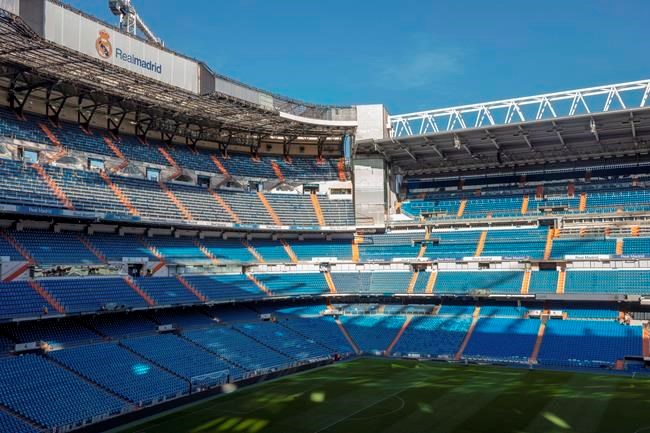The fans may be missing but their voices will be heard as Spain's LaLiga and England's Premier League get back on the pitch.
Broadcasters have been working with EA Sports, using audio from its FIFA video game which in turn came from actual matches. EA receives more than 100 match recordings each year, which are edited down for use in the game.
Now that sound is going to help provide a soundtrack for the stadiums where they were recorded.
Broadcasters reached out to Electronic Arts in late April ahead of leagues resuming.
"They had done a few behind-closed-doors matches before the hiatus and obviously the atmosphere was just not at a level where they felt it would provide a compelling broadcast," said Paul Boechler, a sound designer on the FIFA team. "So they wanted to see essentially if our sound library would help provide any solution."
In the game, triggers and automation via code link the right audio to the on-field action.
"We know when a goal is scored, who scores it. If a tackle happens, how bad was it. We know all these kind of things from our game," said Boechler. "But there's no automated system that gets that from a real-life broadcast in real time."
So EA took its content and exported into a system that the broadcaster can manipulate manually. While EA has tried to automate as much as it can, it needs a human hand to hit the right notes in terms of volume and intensity as the game action dictates.
Background noise and chants are automated, using real sound clips. Basically the broadcaster will serve as a conductor, using a mixing board and a sample board to adapt the sound to the action as needed.
"It's kind of like a DJ really — 'Hey there's a key tackle and I need a high intensity reaction for that,'" said Andrew Vance, audio producer on the FIFA team. "He'll have a button to press basically. And then you can rise the anticipation in the crowd up and down with the mixer or fader."
Nothing is simulated. The only thing generic is some "foundational" crowd noise. That will be overlaid with content from the stadium and fans in questions.
"It's all real crowd recordings from these stadiums. We're basically just playing back the best of the elements that we have," said Boechler. "So if it's Manchester United versus Chelsea or if it's Real Madrid versus Barcelona, you're still hearing chants from those teams, you're still hearing reaction from those stadiums. And it makes for a pretty compelling atmosphere overall."
Upon receipt of the match recordings, EA staff go over the audio carefully to eliminate anything offensive. "Because you can imagine there's quite a few chants that are," said Vance, who like Boechler calls Vancouver home.
EA is providing some 1,600 audio assets, which translates into some 13 hours of content, between the two leagues with all teams covered. It's enough that you won't hear something repeat in the same half, they say.
The hope was that the broadcaster would have enough to choose from but not so much as to be swamped.
Vance says EA has more than 100 chants for some teams. "It's pretty robust at this point after working on this for the past decade or so."
The Spanish and English leagues have distinct fan sounds, which EA captures. It also reflects the size of the stadium, with the volume of Manchester United's Old Trafford different from Bournemouth's more intimate Vitality Stadium.
Boris Gartner, CEO of LaLiga North America, say his broadcasters will also be able to use the raw feed if they want to.
The Spanish league resumed play Thursday while the Premier League returns to action June 17.
This report by The Canadian Press was first published June 11, 2020.
---
Follow @NeilMDavidson on Twitter
Neil Davidson, The Canadian Press



